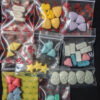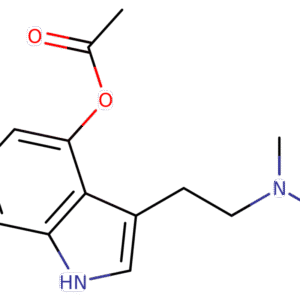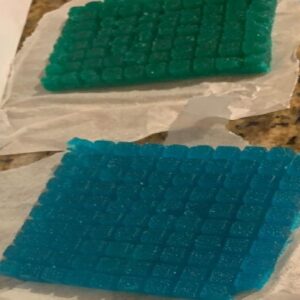25I-NBOMe Blotter
$250.00 Original price was: $250.00.$200.00Current price is: $200.00.
25I-NBOMe blotter has gained a negative reputation due to extensive media attention and reports of serious harm, including fatalities. Despite this history, some individuals report certain effects at lower, commonly referenced doses. However, its risks are well-documented, and caution is strongly advised.
60 in stock
25I-NBOMe blotter is a psychedelic phenethylamine known for its potency and narrow margin of safety. It has become relatively common in some circles, but it is also associated with significantly higher risks compared to substances like LSD or psilocin. Its reputation has been heavily shaped by negative media coverage and reports of severe harm, including fatalities. Although some individuals report specific effects at lower doses, the substance’s risks are well-documented.
At stronger doses, 25I-NBOMe is more likely to cause disorientation, confusion, and overwhelming psychological effects. Some reports suggest it may contribute to a higher likelihood of persistent perceptual changes (HPPD). The compound was first synthesized in the early 2000s but did not appear on the recreational market until around 2010.
It is most often encountered on blotter paper, though it has also been found in powder and liquid form. Common street names include N-bomb, N-bome, Smiles, 25I, Bom-25, and Cimbi-5.
Chemical details:
• Molecular formula: C₁₈H₂₂INO₃
• Molecular weight: 427.282 g/mol
• IUPAC name: 2-(4-iodo-2,5-dimethoxyphenyl)-N-[(2-methoxyphenyl)methyl]ethanamine
In some subcultures, there is a history of intentionally consuming unusually large doses of psychedelics—such as the practice known as “thumbprinting,” where an individual places a thumb into pure powder and ingests it. Estimating how many people have engaged in this behavior or the dose involved is extremely difficult, but it is notable because it has its own terminology.
LSD itself has been used by millions of people since the first intentional ingestion in 1943, and global usage likely reaches into the hundreds of millions. One frequently cited point regarding LSD’s comparatively low acute toxicity is the documented history of people accidentally or intentionally taking very large doses without fatal outcomes. For example, in 1974, a group of eight individuals unknowingly inhaled powdered LSD thinking it was cocaine, consuming several thousand doses at once.
Related products
Mushrooms
Psychedelics Collection
LSD
LSD







